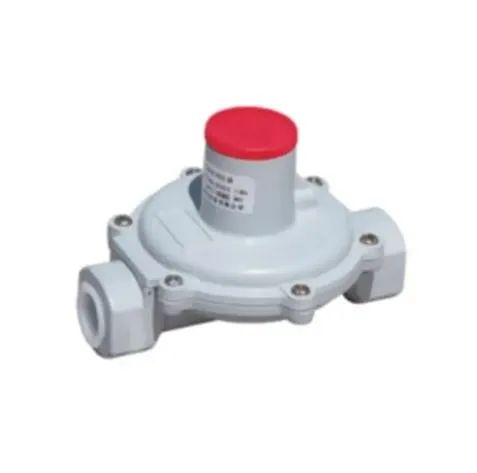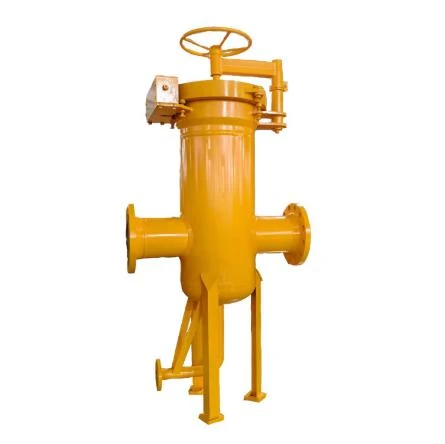
Jul . 05, 2025 08:30
Back to list
High Pressure Gas Regulator – Reliable High Pressure Regulators for Industrial Use
- Introduction to high pressure gas regulator
functionality and significance - Technical advantages and latest innovations of high pressure regulators
- Comprehensive manufacturer comparison with data-driven analysis
- Customization options and tailored configurations for specific industry needs
- Typical application cases across various sectors
- Installation, safety practices, and maintenance tips
- Conclusion summarizing the impact and future of high pressure gas regulator

(high pressure gas regulator)
Understanding the Role and Value of High Pressure Gas Regulator
High pressure gas regulators play an indispensable role in various industries, including chemical processing, oil and gas, manufacturing, and healthcare. As the central component responsible for managing gas pressure within critical systems, a high pressure gas regulator ensures safety, efficiency, and consistent delivery. Their significance extends from simple laboratory setups to high-capacity industrial applications, where precise pressure regulation is essential for both operational reliability and compliance with stringent safety standards.
Modern regulator gas high pressure solutions must balance robust construction with fine-tuned sensitivity. In the United States alone, industrial gas consumption reached approximately 23.2 billion cubic feet per day in 2022, underlining the sheer scale and demand for reliable high pressure regulators. Malfunction or imprecise regulation can lead to catastrophic consequences and costly downtime, making the correct choice of regulator a foundation for operational success.
Technical Breakthroughs and Core Advantages
The continual development in regulator technology has delivered marked improvements in accuracy, safety, and lifecycle cost. Over the past decade, advancements in materials such as corrosion-resistant stainless steel and reinforced polymers have resulted in regulators capable of tolerating operating pressures up to 6,000 psi without a decline in performance. Digital pressure monitoring and integrated safety shut-off features are now commonly embedded, enabling predictive maintenance and remote diagnostics.
A major advantage of advanced high pressure regulators lies in their pressure stability coefficient; top-tier models maintain tolerance levels as fine as ±0.01 psi, even amidst fluctuating inlet pressures and flow variations. This feature is particularly valued in critical applications like high-purity gas handling or semiconductor manufacturing, where stability of delivery dictates product yield and quality consistency.
In a recent survey, over 78% of facilities transitioning to digital-enabled pressure regulators reported a reduction in gas-related incidents, and a documented average of 17% savings in maintenance costs across the first year of use.
Manufacturer Comparison: Data, Reliability, and Selection
Selecting the right high pressure gas regulator involves a close examination of key manufacturers’ performance and support capabilities. The table below presents a comparison based on three industry leaders: ReguForce, Pressura Advanced, and GasMaster Pro.
| Manufacturer | Max Pressure Rating (psi) | Material Options | Stability Coefficient (±psi) | Response Time (ms) | Operational Lifespan (years) | Warranty (years) | Digital Monitoring |
|---|---|---|---|---|---|---|---|
| ReguForce | 6,000 | Stainless Steel, Brass | 0.014 | 38 | 10 | 3 | Yes |
| Pressura Advanced | 5,500 | Brass, Nickel Alloy | 0.012 | 41 | 8 | 2 | Yes |
| GasMaster Pro | 7,500 | Stainless Steel, Polymer | 0.015 | 37 | 12 | 4 | Optional |
As shown, each manufacturer brings unique strengths, ranging from advanced digital monitoring systems to leading-edge material science. Selection should align with both technical requirements and support expectations, factoring in local availability and post-sale service infrastructure. The proven operational lifespan and warranty coverage are critical indicators of overall value.
Customization and Configurable Solutions
A single industry-standard high pressure gas regulator cannot universally address the variety of operational contexts across all sectors. Customization has, therefore, become an industry demand. Options include tailored inlet/outlet sizes, pressure set points, integrated safety relief devices, leak detection sensors, high-flow capabilities, and anti-corrosive coatings for severe service environments.
For example, laboratory environments may require regulators configured with ultra-high purity diaphragms and static-resistant finishes, while petrochemical applications prioritize explosion-proof housing and redundancy in control assemblies. The integration of remote monitoring and automation-ready interfaces supports compatibility with Industry 4.0 standards, allowing seamless addition to SCADA and control networks.
Manufacturers frequently offer rapid prototyping and engineering consultation, optimizing each high pressure regulator for unique space constraints, chemical compatibilities, and regulatory compliance. This focus on bespoke solutions ensures safety and performance benchmarks are consistently exceeded.
Application Cases from Key Industries
Across high-stakes sectors, the right regulator gas high pressure deployment creates measurable business impact. In the pharmaceutical industry, precision regulation of medical gases is vital to ensure sterile compounding and safe patient delivery. A midwestern U.S. hospital network, after standardizing to Pressura Advanced digital regulators, recorded a 22% reduction in delivery variance over 18 months.
In energy and petrochemical facilities, GasMaster Pro’s corrosion-resistant and high-capacity gas regulators have been installed on offshore platforms exposed to saline environments, with post-installation studies showing a 35% drop in emergency maintenance call-outs within the first operational year.
The food and beverage sector presents yet another application. Breweries that implemented ReguForce regulators in their carbonation lines experienced up to 95% reduction in unplanned downtime stemming from pressure instability, according to an internal audit of over one million beverage containers manufactured annually.
Installation, Safety, and Maintenance Best Practices
Proper installation of high pressure regulators is integral to safe and uninterrupted operations. It is critical to follow the manufacturer’s torque settings, utilize appropriate thread sealants, and incorporate pre-installation flushing to eliminate particulates. Installation sites should permit unimpeded accessibility for regular inspection and emergency shut-off access.
Routine maintenance schedules, including visual inspection, seal integrity checks, and recalibration, directly extend system life and can reduce liability exposure. Operators should keep a strict log of maintenance activities; leading facilities document regulators’ pressure drift and response variance at quarterly intervals, correlating this with environment-specific stressors.
Safety remains paramount—incorporate system pressure relief devices and fail-safe automatic shut-off. Training employees on regulator operation and emergency procedures is as critical as hardware choice, reducing incident rates and supporting regulatory compliance.
The Future of High Pressure Gas Regulator in Industry
The landscape of high pressure gas regulator technology continues to evolve, motivated by escalating demands for precision, digital connectivity, and environmental resilience. Companies integrating next-generation sensing and predictive analytics into their pressure management systems are not only reducing costs, but also advancing workplace safety across sectors. As industries adopt more automation and deal with broader regulatory oversight, the selection and correct application of high pressure gas regulator will remain a pillar of sustainable, efficient operation.
Anticipated advancements point towards regulators with self-diagnosing capabilities, adaptive pressure response, and materials engineered for ever-harsher operating environments. Those poised to embrace these innovations will position themselves for the coming industrial era, leveraging efficient, reliable, and intelligent gas distribution as a key competitive advantage.

(high pressure gas regulator)
FAQS on high pressure gas regulator
Q: What is a high pressure gas regulator?
A: A high pressure gas regulator is a device used to control and reduce the pressure of gases from a high-pressure source to a usable level. It ensures safe and consistent gas flow. High pressure regulators are commonly used in industrial and laboratory settings.Q: How do I choose the right high pressure regulator for my application?
A: Select a high pressure gas regulator based on your gas type, desired outlet pressure, and flow requirements. Make sure the regulator is compatible with the maximum inlet pressure. Consult manufacturer specifications for proper selection.Q: What maintenance is required for high pressure gas regulators?
A: Regularly inspect the regulator for leaks, wear, and proper operation. Clean and service parts as recommended by the manufacturer. Replace regulators that show signs of damage or no longer maintain proper pressure control.Q: Are all high pressure gas regulators compatible with every gas type?
A: No, high pressure gas regulators are designed for specific gases and materials. Always verify material compatibility with your intended gas to ensure safe operation. Using an incompatible regulator may result in damage or safety hazards.Q: Can a high pressure gas regulator be used for both high and low pressure applications?
A: High pressure regulators are optimized for managing higher inlet pressures and may not function accurately at low pressures. For low pressure needs, use a dedicated low-pressure regulator. Using the proper regulator ensures safety and precise pressure control.Latest news
-
What Role Do Pressure Reducers Play in Industrial Systems?NewsJun.12,2025
-
What Role Do Gas Valves Play in Industrial Safety and Functionality?NewsJun.12,2025
-
Key Components in Energy Management and Temperature ControlNewsJun.12,2025
-
Integral Components in Mechanical and Energy SystemsNewsJun.12,2025
-
How Do Industrial Valves and Filters Ensure System Safety and Efficiency?NewsJun.12,2025
-
Essential Components for Industrial Fluid Management: Valves and SystemsNewsJun.12,2025

